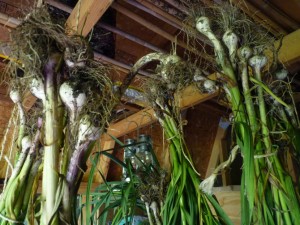Summer Waxing Strawberry Moon
Hot today. At least by our standards. 85. Plus a dewpoint of 70. Not outside weather for this gardener. I did work outside this morning, weeding in the orchard and checking the trees. I’m going to need a consultation with Ecological Gardens because some of the stuff they planted, I don’t recognize and I don’t want to remove friendlies out of ignorance.
Kate’s off getting a pre-op physical, having dental work done and nails and hair. A sort of clean up, paint up, fix up day for her. Her surgery is a week from tomorrow and can’t come a day too soon for her. The pain in her hip gives her fits during the day when she walks and at night when she sleeps. She looks forward to having more than two sleeping positions. So would I.
The Romance of the Three Kingdoms has held me for several weeks now, though I’m not reading in large chunks. It’s a three-volume work about the end of the Han Dynasty and the emergence of the three kingdoms of Wu, Wei and Shu. This period only last for about 45 years, but it holds a position of particular importance in Chinese culture, with many of its figures like Liu Bei, Cao Cao, Zhuge Liang and the three brothers: Guan Yu, Zhang Fei and Liu Bei attaining iconic and archetypal significance.
(Liu Bei, Zhang Fei and Guan Yu)
It’s not an exact analogy at all, but it resembles the mythos of the American West, a time when men were men and some men were very good and others were very bad.
If you enjoy political and military tales or have an interest in the logic of other cultures, then the Three Kingdoms may enthrall you as it has me. If you’re not sure, I recommend seeing the Red Cliffs, the two disc version. The movie showcases all the main characters and records a pivotal battle, one that has ongoing importance in Chinese culture. Not to mention that it’s great fun. Again, if political and military intrigue fascinate you.

 garlic in August. Over time the plants become acclimated to this particular place, its moisture rhythms and temperature variations. It is becoming what it is because of where it is. Just like me.
garlic in August. Over time the plants become acclimated to this particular place, its moisture rhythms and temperature variations. It is becoming what it is because of where it is. Just like me.